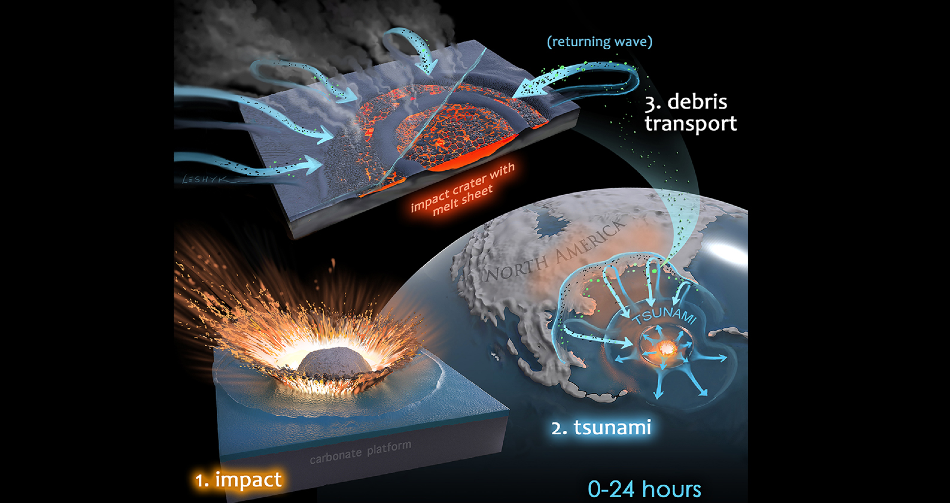Jan 21 2020
New insights into how microbial life was quickly re-established following the mass extinction of the dinosaurs have been detailed for the first time by Curtin University-led research.
 Image Credit: Victor Leshyk.
Image Credit: Victor Leshyk.
The research, published in Geology, analysed biomarkers, also known as molecular fossils, found in drill core rock samples from the centre of the Chicxulub crater located in deep sea waters of the Gulf of Mexico.
The findings suggest that remains from land plants, fungi and coastal microbial mats, like modern stromatolites, were transported into the crater through wave activity during a giant tsunami in the immediate aftermath of the giant asteroid impact credited with causing the extinction of the dinosaurs, 66 million years ago.
Lead author PhD candidate Bettina Schaefer, from the WA-Organic and Isotope Geochemistry Centre (WA-OIGC) in Curtin’s School of Earth and Planetary Sciences, said the research study provided the first molecular evidence of many forms of photosynthetic life present in the Chicxulub crater, demonstrating how resilient microorganisms were after experiencing abnormally hostile conditions following the asteroid’s impact.
“Our research shows that when the dust from the asteroid’s impact settled and sunlight returned to ideal levels, there was a rapid resurgence of land plants, dinoflagellates, cyanobacteria and all forms of anaerobic photosynthetic sulfur bacteria, including those from microbial mats in the crater area,” Ms Schaefer said.
John Curtin Distinguished Professor Kliti Grice, the founding director of WA-OIGC in Curtin’s School of Earth and Planetary Sciences, said the research findings further suggested the phytoplankton communities in the post-impact crater basin continued to produce and evolve at a ‘rapid’ rate.
“The development and productivity of phytoplankton was accompanied by major transitions in nutrient and oxygen supplies that shaped the recovery of microbial life. There was so much going on in such a short time frame, it really was like a post-apocalyptic microbial mayhem was happening in the Chicxulub crater.”
The research project was funded by an Australian Research Council Discovery Project Grant.
The full paper, ‘Microbial life in the nascent Chicxulub crater,’ can be found online here.